Pawscessories is reader-supported. When you buy via links on our site, we may earn an affiliate commission at no cost to you.
Learn more.
All dogs shed to some degree, but some more than others. Cocker Spaniel shedding falls on the low side of the spectrum.
However, every dog has their own individual shedding pattern. This is determined by many factors such as nutrition, age, environment, and health.
So, do Cocker Spaniels shed?
There’s no getting around it, Cocker Spaniels do shed. In fact, a recent survey of Cocker Spaniel owners found that 86% of them experience some degree of shedding with their dog. In addition, 93% categorize their Cocker Spaniel as a low to moderate shedder.
But how much hair is actually lost, and is there anything you can do about it?
In this post, we’ll look at the extent of Cocker Spaniel’s shedding and offer some tips on managing it.
Let’s dive in.
Table of Contents
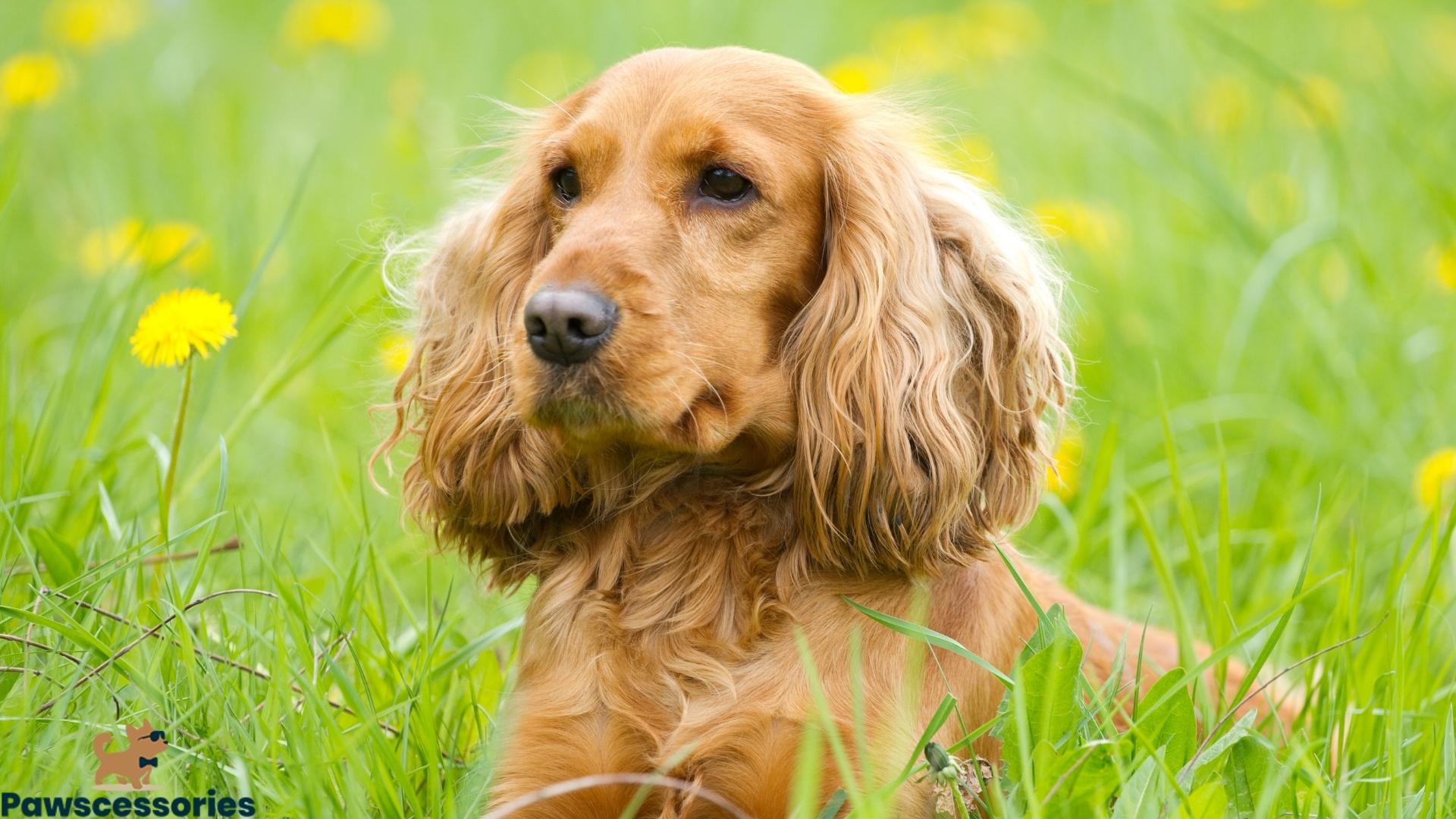
Cocker Spaniel Shedding Overview
All dogs shed to some degree, but the amount of hair or fur lost can vary greatly from breed to breed.
Quick Summary Table
| Coat | Medium to long, straight or slightly wavy, silky texture |
| Color | Black, brown, red, golden, and parti-color (two of more colors) |
| Shedding | Low to medium shedding dogs |
| Grooming Needs | High grooming maintenance |
Do Cocker Spaniels Shed?
Yes, Cocker Spaniels shed. On a scale of 1 to 5, with 5 being an extreme shedder and 1 being no shedding, Cocker Spaniels would be a 2 to 3.
A recent survey of 167 real Cocker Spaniel owners found that 79% of owners categorize them as low to moderate shedders.
So what does this mean in terms of actual hair loss?
How Much Do Cocker Spaniel Shed?
Cocker Spaniels are low to moderate shedders, so you can expect them to lose anywhere from a few hairs a day to a small handful.
However, in the survey mentioned, out of the 167 real Cocker Spaniel owners, 14% of owners categorize them as non-shedders, and 7% claimed they were extreme shedders.
So there can be some variation from dog to dog.
Several factors can affect how much your Cocker Spaniel sheds. These include:
- Age
- Grooming
- Nutritional deficiencies
- Seasonal changes
- Health conditions
For example, puppies and older dogs tend to shed more because they’re growing or their coats change with age.
Additionally, suppose your dog isn’t getting enough nutrients in their diet. In that case, they may shed more as their body tries to compensate for the deficiency.
Shedding Seasons
Cocker Spaniels typically shed the most in the spring and fall. This is because they’re responding to the change in seasons and the amount of daylight.
In the spring, as days get longer, their body starts to prepare for summer by shedding their winter coat.
In the fall, as days get shorter, their body starts to prepare for winter by growing a thicker coat.
So you can expect your Cocker Spaniel to do some extra shedding during these times of the year.
Are Cocker Spaniels Hypoallergenic?
Cocker Spaniels are not considered a hypoallergenic dog breed.
However, no dog is truly hypoallergenic as all dogs produce some form of dander, which is the main cause of allergies.
Dander is made up of skin cells containing a protein similar to human skin cells.
When these proteins become airborne, they can trigger an allergic reaction in people who are sensitive to them.
With that said, more shedding usually indicates more allergens.
So while Cocker Spaniels are probably on the lower end of the allergen spectrum, they’re still not considered hypoallergenic.
Do Cocker Spaniels Have Hair or Fur?

Cocker Spaniels are known as a breed with hair.
However, hair and fur are made up of the exact same chemical composition. They are both made of keratin and are chemically indistinguishable.
If you were to put both under a microscope, you could not tell them apart.
However, some experts believe there are three main differences between hair and fur.
- Hair is usually thinner and shorter than fur.
- Hair grows continuously while fur goes through growth cycles.
- Dog fur is generally denser than dog hair.
But in the end, it’s really just a matter of semantics.
Scientifically you could argue that Cocker Spaniels have both hair and fur since they are the same thing!
We just use these terms to describe different appearances.
Cocker Spaniel Coat Type
The Cocker Spaniel’s coat is a long, straight, or slightly wavy coat with a silky texture.
They also have a double coat, which means they have a top coat and an undercoat.
The top coat is the longer outer layer of hair that you see. The undercoat is the shorter, softer layer of hair closest to their skin.
The top coat can be a smooth, silky texture or a rough wirey texture.
The most common colors are black, brown, red, and golden. However, you can also find them in parti color (two or more colors).
They have a low to medium shedding coat and high grooming needs.
It’s also important to note that there are two types of Cocker Spaniels. This can affect how much they shed and how you groom them.
English Vs. American Cocker Spaniel
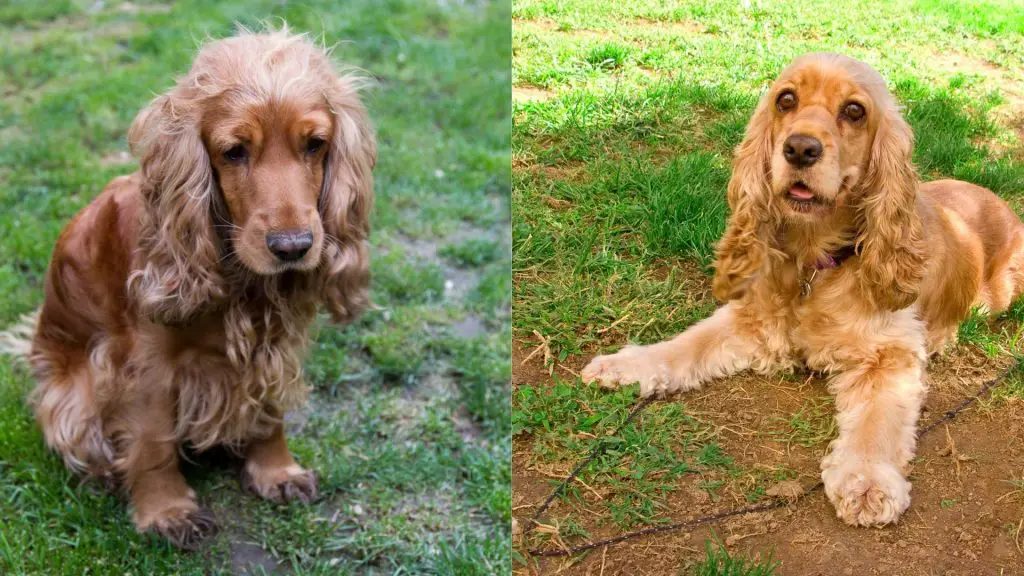
The biggest difference in comparing English vs. American Cocker Spaniel is physical appearance.
Personality and temperament-wise, they are very similar.
English Cocker Spaniel
The English Cocker Spaniel has taller legs ranging in height from 15 – 17 inches.
In addition, English Cocker Spaniels tend to have shorter coats than American Cocker Spaniels.
There are also two types of English Cocker Spaniel, show type and working type. The show type has a more silky coat, while the working type’s coat is more like a dense fur.
American Cocker Spaniel
The American Cocker Spaniels have shorter legs ranging in height from 14 – 15 inches.
In addition, American Cocker Spaniels tend to have longer coats than the English Cocker Spaniel.
They also tend to have a shorter snout than the English Cocker Spaniel.
Due to their slight difference in appearance and coat, these Cocker Spaniels are groomed differently (more on below).
How To Manage A Cocker Spaniels Shedding
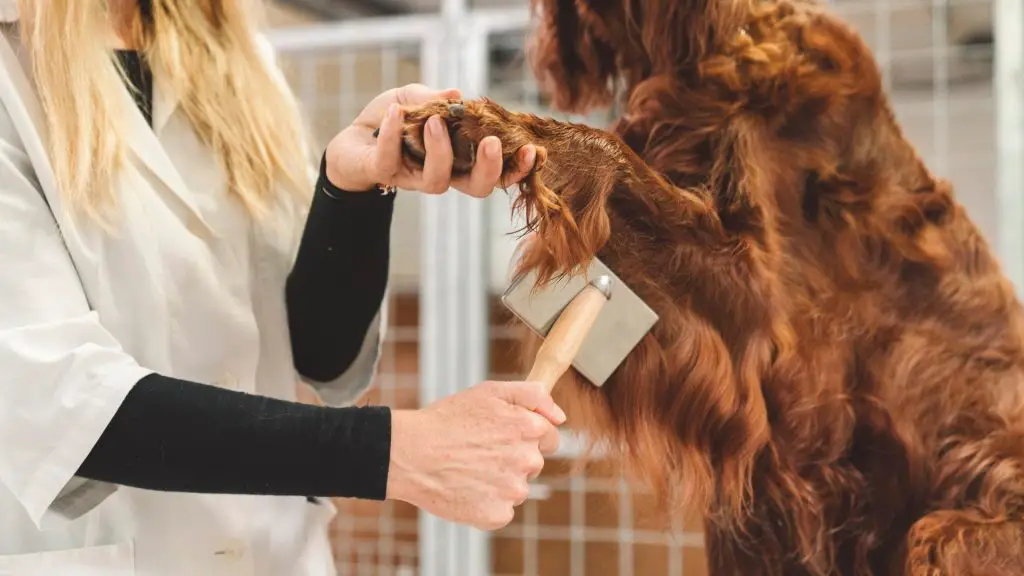
Regular grooming is the best way to manage a Cocker Spaniel’s shedding.
This will help to remove any loose hair before it has a chance to fall out on its own and end up on your furniture or clothing.
Bathing can also be helpful, especially with an anti-shedding shampoo, but you don’t want to overdo this.
Too much bathing can strip the natural oils from their coat, leading to dry skin and more shedding.
Another thing you can do to control their shedding is to make sure they are being fed foods high in fatty acids, vitamins, linoleic acid, and zinc.
Many pet parents of this dog breed would benefit from robot vacuums to help them stay on top of their shedding.
Also, since they have seasonal shedding, it’s recommended to blow out their coat during these times of the year (generally spring and fall).
You can use a blow dryer to help get rid of dead or loose fur before it finds its way all over your house.
Finally, don’t forget to check for ticks and fleas regularly, both of which can contribute to increased shedding.
How Often Should You Be Grooming A Cocker Spaniel?
For an adult Cocker Spaniel, you should be grooming them at least twice a week, Ideally every few days.
This will help to prevent tangles and mats from forming in their coat. It will also help remove any dirt, debris, or allergens trapped in their fur.
With Cocker Spaniel puppies, you’ll want to increase the frequency of your grooming sessions to at least twice a week.
This is because they are constantly growing and shedding their puppy coat.
And lastly, during shedding seasons, you’ll want to groom them more often, ideally every day or every other day.
This will help to remove any loose fur before it ends up all over your house.
Tips For Grooming A Cocker Spaniel
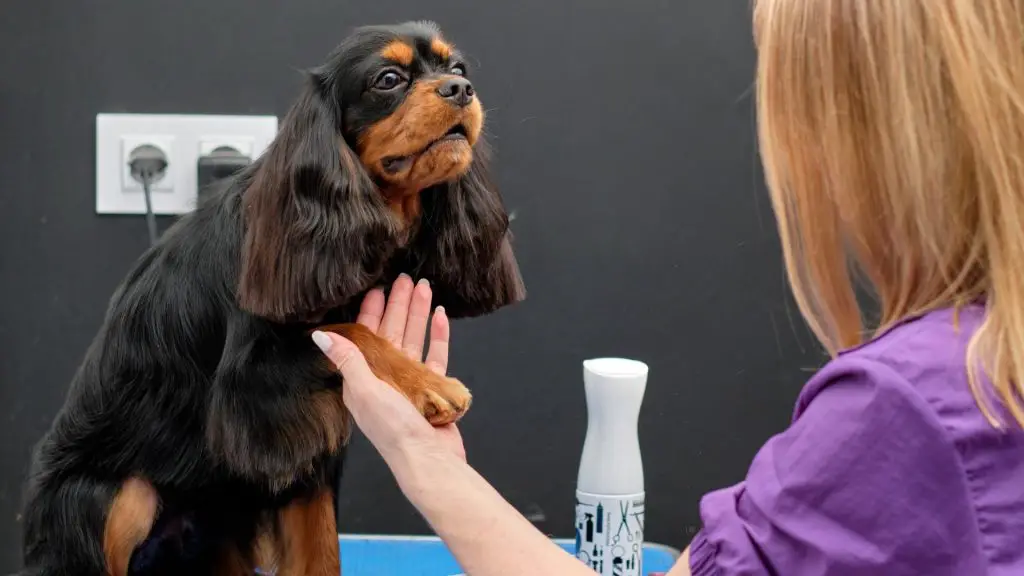
So here are some tips for properly grooming a Cocker Spaniel.
You’ll want a slicker brush, de-shedding rake, and steel comb for grooming sessions.
Here is the best slicker brush, de-shedding rake, and steel comb for Cocker Spaniels on amazon:
The slicker brush will be your go-to for weekly brushing. It helps to remove any dirt, debris, or tangles from their coat.
However, be careful with this brush when your cocker’s coat is shorter. It has wire bristles, so it can damage their skin. It’s imperative to be careful when brushing their ears. They are large and delicate.
The de-shedding rake is a great tool to use during shedding season.
It helps to remove any dead or loose fur before it has a chance to fall out on its own and end up all over your house.
Lastly, the steel comb is perfect for use after baths.
It helps to remove any knots or tangles that may have formed while their coat was wet. It can also be great for getting rid of any mats or tangles.
Start at the bottom of their coat and work your way up. Be careful not to pull too hard on their fur as this can hurt them.
If you encounter a particularly bad tangle, you may need to trim it with scissors. This is also a great time to check their skin for irritations, hot spots, or flea bites.
Many owners will opt for a professional to do trimmings every few months to make life easier.
If you do choose to do it yourself, here is a Cocker Spaniel grooming video to help visualize how they do it:
As I previously mentioned, each type of Cocker Spaniel will have slightly different grooming needs.
Grooming An English Cocker Spaniels
Between the English and American Cocker Spaniel, the English require less maintenance.
They generally have shorter coats, so they may only need their coat brushed 2 times a week.
They require more frequent baths though, as their coat is more prone to getting dirty.
They also need to be trimmed every few months to keep their coat looking neat and tidy.
Grooming An American Cocker Spaniels
The American Cocker Spaniel has a longer coat than the English.
This means they will require frequent brushing to avoid mats and tangles in their hair.
They also need to be trimmed and bathed more often due to their long coat.
They do not require as much grooming as other long-haired dog breeds, but they need more than the English Cocker Spaniel.
Tips To Reduce Cocker Spaniel Shedding
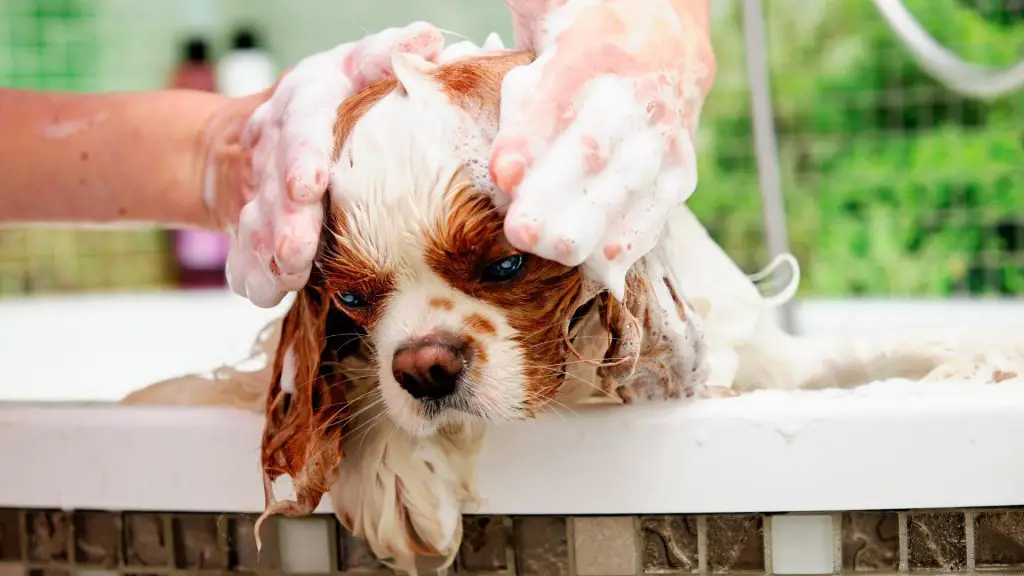
The best way to reduce Cocker Spaniel shedding is to brush them regularly. This goes for all dog breeds.
This helps to remove any dead or loose fur before it has a chance to fall out on its own. It’s especially important for dogs with a double coat.
Here are a few tips to help reduce your dog’s coat from shedding non-stop:
- Brush their coat 3 times a week.
- Invest in a good-quality slicker brush, de-shedding rake, and steel comb.
- Bathe them every few weeks or as needed with high-quality shampoo.
- Check their skin for any irritations, hot spots, or flea bites. Certain health concerns can cause increased shedding.
- Give them a regular diet of high-quality food. A healthy coat starts from the inside out.
- Take them for regular vet checkups. This reduces the chances of health concerns affecting their shedding.
- Give them supplements to help with their coat and skin. This will indirectly help with shedding.
Can Fish Oil Help Decrease Cocker Spaniel Shedding?
Yes, fish oil can help to decrease Cocker Spaniel shedding.
Fish oil is a natural supplement that helps to improve your dog’s coat and skin health.
It’s packed with omega-three fatty acids, which are great for their coat.
You can find fish oil supplements at most pet stores or online.
Other Frequently Asked Questions
When Will My Cocker Spaniel Puppy Lose His Puppy Coat?
Most cocker spaniel puppies will lose their puppy coat around the age of six to eight months.
Some may shed their puppy coat sooner and some may take a little longer.
It really just depends on the individual dog. You can expect them to start shedding their puppy coat around this time though.
Why Is My Cocker Spaniel Shedding So Much?
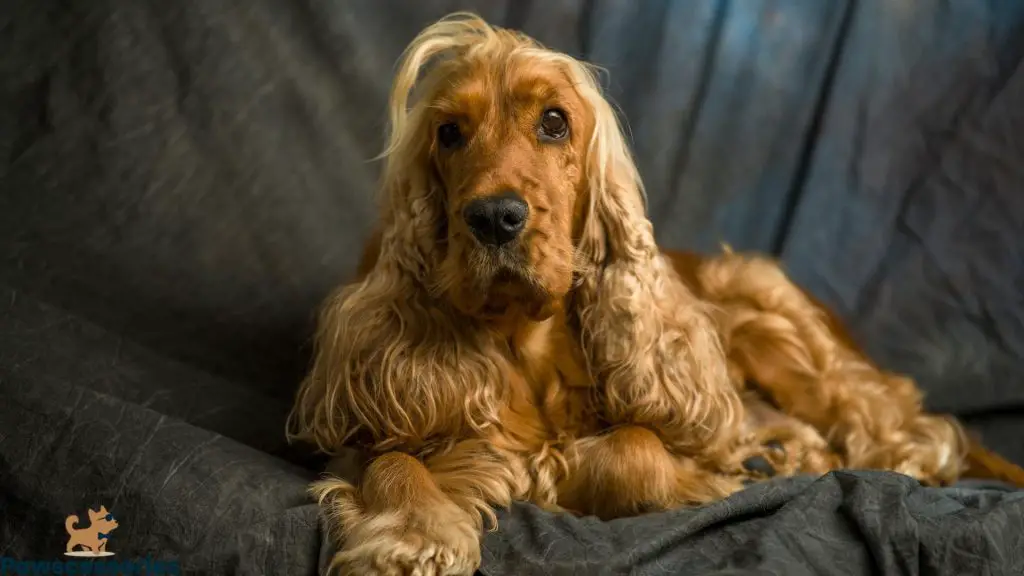
A dog’s hair can shed more or less depending on the time of year. For example, Cocker Spaniels typically shed more in the spring and fall when they are blowing their coat.
It’s common to see increased shedding in pregnant or nursing Cocker Spaniels.
In addition, it could be a sign of an underlying health problem. For example, ticks and fleas can cause a dog to shed more.
If you’re concerned about the amount your dog is shedding, it’s always best to speak with your veterinarian. They can help rule out any health concerns and give tips on reducing their shedding.
Lastly, your dog’s age can play a role. For example, puppies and seniors typically shed more than adult dogs.
Should You Shave Your Cocker Spaniel?
No, you should not shave your Cocker Spaniel.
While it may seem like a good way to reduce their shedding, it can actually do more harm than good.
In fact, shaving a dog’s double coat does nothing to stop shedding. Instead, it simply reduces the size of the hairs being shed.
This can be even more annoying to deal with.
Lastly, shaving a dog’s coat can cause their skin to become irritated and sunburned.
It also makes them more susceptible to cold weather since they no longer have their natural coat to protect them.
It’s okay to shave your Cocker Spaniels coat but never shave down to their skin.
Overall, it’s best to let a professional groomer do it if you decide to go this route.
How Do You Groom A Cocker Spaniels Ears?
Cocker Spaniels have long, floppy ears that are delicate and prone to infection.
This is why keeping them clean and free of debris is essential.
You’ll need a slicker brush and scissors to brush and trim them.
Start by using the slicker brush to remove any dirt or debris from their ears. Be careful not to push too hard.
Next, use the scissors to trim any long hairs around the outer edge of their ears.
Be sure to only trim a little bit at a time. You can always trim more if needed, but you can’t put the dog’s hair back once it’s been cut.
If you’re uncomfortable doing this, you can always take them to a professional groomer.
Here are a few tips on how to clean your Cocker Spaniel’s ears:
- Use a cotton ball soaked in cleanser explicitly made for dog’s ears.
- Gently wipe the inside of their ears, careful not to go too deep.
- Remove any excess wax or debris with a cotton swab.
- Repeat this process once a month or as needed.
If you notice your dog shaking its head or scratching its ears more than usual, it could signify an infection.
Final Thoughts
Yes, Cocker Spaniels shed, but they are low to moderate shedding dog breed.
In addition, there are ways to reduce the amount of hair you have to deal with.
From regular grooming to supplements and special diets, you can do several things to help control their shedding.
The biggest thing with Cocker Spaniels is the maintenance of their coat.
They require regular brushing and grooming to keep their coat healthy and free of mats and tangles.
Other posts you may find interesting:
Papillons: Households & Owners They’re Good & Bad With
